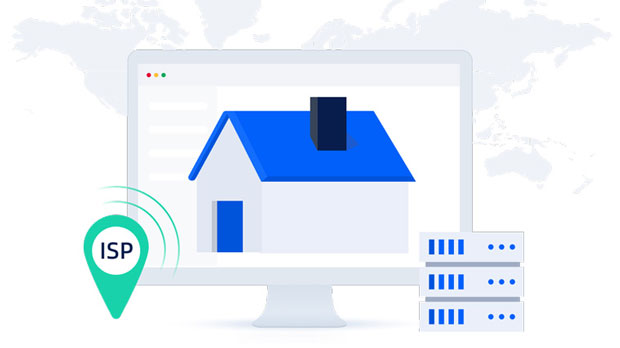In the ever-evolving world of proxy services, dynamic residential IPs have emerged as a critical element for ensuring smooth and secure browsing, anonymity, and scalability. Two popular proxy solutions that cater to this need are PYPROXY and Croxy Proxy. The focus of this article is to evaluate which of these services offers superior switching efficiency in dynamic residential IP environments. Switching efficiency refers to the speed and reliability with which a proxy service can transition between different IPs within a given network, ensuring minimal downtime and optimal connection performance. By comparing the key features, technical architectures, and real-world performance, this article provides an in-depth analysis of the advantages and potential drawbacks of each solution.Introduction: The Importance of Dynamic Residential IPsDynamic residential IPs are used to mask the user's actual IP address with a constantly changing proxy ip address. These IPs are assigned from real residential locations, making them much harder for websites to detect and block. This capability is critical in tasks such as web scraping, ad verification, and secure browsing, where maintaining a high level of anonymity and scalability is required.Given this context, both Pyproxy and Croxy Proxy offer solutions for routing web traffic through rotating residential IPs. However, the efficiency of their IP-switching mechanism directly impacts user experience, especially for activities requiring high frequency and large-scale proxy requests.Understanding Pyproxy's Architecture and Switching EfficiencyPyproxy is a Python-based proxy service that allows users to easily route their traffic through residential IPs. It’s commonly utilized in web scraping and other high-volume internet operations. One of its main selling points is its flexibility and ease of integration into custom workflows due to its open-source nature.IP Rotation Process:The way Pyproxy handles IP switching is by leveraging multiple proxies that automatically rotate after a predefined amount of time or a certain number of requests. This rotation mechanism ensures that users are always using a fresh IP, making it more difficult for websites to detect patterns and block the proxy service.Switching Speed and Latency:The efficiency of Pyproxy in terms of switching speed largely depends on the size and quality of its proxy pool. As Pyproxy relies on external sources for proxy pools, its switching speed can be variable, depending on network conditions and the proxy provider. In general, Pyproxy provides a reasonable switching time but may experience occasional latency issues when a proxy server is slow to respond.Scalability Considerations:In terms of scalability, Pyproxy’s open-source framework allows for easy expansion. However, this scalability comes with an inherent trade-off: increased complexity in managing a larger proxy pool, which can affect switching efficiency if not managed correctly.Understanding Croxy Proxy’s Architecture and Switching EfficiencyCroxy Proxy, on the other hand, is a commercial proxy service that specializes in high-speed, low-latency IP switching. Its focus is primarily on providing a user-friendly and seamless experience without the need for in-depth technical setup.IP Rotation Process:Croxy Proxy offers a sophisticated IP rotation system, where users can opt for either automatic or manual switching modes. This flexibility allows businesses and individuals to fine-tune their switching behavior according to specific needs, making it a more controlled and efficient solution for high-frequency tasks.Switching Speed and Latency:Croxy Proxy is known for its high switching speed. Unlike Pyproxy, which might be slowed down by external factors, Croxy Proxy's infrastructure is designed to minimize delays, ensuring rapid IP switching and lower latency. This makes it a preferred choice for activities that require continuous and frequent IP changes, such as large-scale data collection or testing.Scalability Considerations:While Croxy Proxy excels in speed and ease of use, its scalability is limited compared to Pyproxy. Since it’s a closed-source solution, users have less control over the proxy pool, which may be a drawback for highly complex, large-scale operations. However, for most users, the ready-to-use nature of Croxy Proxy offers sufficient scalability for typical use cases.Performance Comparison: Pyproxy vs. Croxy ProxyWhen evaluating the performance of Pyproxy and Croxy Proxy in terms of IP-switching efficiency, several factors must be considered. These include switching speed, reliability, network stability, and the overall user experience.Speed of Switching:Croxy Proxy generally outperforms Pyproxy in terms of switching speed. Croxy Proxy’s infrastructure is optimized for rapid IP rotation with minimal downtime, which is ideal for high-frequency operations. Pyproxy, while reasonably fast, may suffer from latency due to the reliance on external proxy providers.Reliability of Connections:In terms of reliability, Croxy Proxy again holds the advantage. Its dedicated infrastructure ensures stable and consistent connections with minimal downtime. On the other hand, Pyproxy’s reliability is somewhat dependent on the quality of the external proxy providers it utilizes. Users may experience some instability if the proxy sources are unreliable.Scalability and Customization:For users who require extensive customization and control over their proxy pool, Pyproxy offers more flexibility, especially for developers who are comfortable with code-based solutions. In contrast, Croxy Proxy’s closed-source nature limits the level of customization available, but its plug-and-play convenience makes it a strong choice for users who value ease of use over technical control.Cost Efficiency:While not directly related to switching efficiency, cost is an important factor in deciding between Pyproxy and Croxy Proxy. Pyproxy’s open-source nature means that it is free to use, but users may incur additional costs for external proxies or API usage. Croxy Proxy, being a commercial service, has a subscription model that may be more expensive but offers a more streamlined and reliable experience.Real-World Use CasesThe choice between Pyproxy and Croxy Proxy ultimately depends on the specific requirements of the user’s project.For Small to Medium-Sized Operations:If the operation involves moderate proxy switching and ease of use is a priority, Croxy Proxy is the better choice. It offers quick IP switching, low latency, and a user-friendly experience, making it ideal for activities such as market research, ad verification, or basic web scraping.For Large-Scale, Customizable Operations:If the operation requires extensive customization, scalability, and control over the proxy network, Pyproxy may be a better fit. Its open-source nature allows developers to integrate it into custom setups, making it suitable for large-scale data collection, automated processes, or custom proxy management systems.Conclusion: Which Proxy Solution Is Better for You?In conclusion, the switching efficiency between Pyproxy and Croxy Proxy comes down to a few key factors. For users seeking a fast, reliable, and easy-to-use solution, Croxy Proxy provides superior IP-switching efficiency with minimal downtime and low latency. It is ideal for those with high-frequency proxy requirements but without the need for deep customization.On the other hand, for users who prioritize customization, scalability, and flexibility, Pyproxy offers greater control over the proxy network. While its switching speed may be slightly slower and less consistent, it provides a more tailored experience for those willing to invest time and resources into managing their proxy setup.Ultimately, the decision between Pyproxy and Croxy Proxy depends on the user’s specific needs, including the scale of operations, budget, and technical expertise.
Sep 29, 2025



































































